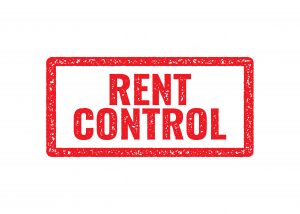What’s At Stake For Minneapolis Housing Providers in Tuesday’s Election
 A column this week in the Minnesota StarTribune by business columnist Evan Ramstad stated plainly what’s at stake for housing providers in next Tuesday’s Minneapolis City Council elections in his story Rent control proposals are a deal-breaker in Minneapolis city elections.
A column this week in the Minnesota StarTribune by business columnist Evan Ramstad stated plainly what’s at stake for housing providers in next Tuesday’s Minneapolis City Council elections in his story Rent control proposals are a deal-breaker in Minneapolis city elections.
What he didn’t detail are proven consequences of rent control (aka rent stabilization) policies where they have been implemented. Let’s review what the harmful consequences of these failed policies have been where it has been implemented:
Economic
- Reduced Incentive to Maintain or Improve Properties
When rents are capped, owners earn less profit margin. That often means fewer upgrades, deferred maintenance, and declining housing quality over time. As costs rise, the money may simply not be there to fix or maintain items that don’t involve the health and safety of those living there. - Less New Housing Construction
Developers shy away from building in markets where potential returns are limited by law. Lenders are also reluctant to give developers money when they know rent may not be able to keep pace with escalating costs. Over time, less multifamily construction worsens the housing shortage rent control was intended to solve. - Higher Rents in Uncontrolled Units
Because rent-controlled units are capped, owners of market-rate units often raise their rents more aggressively to make up the difference. This can create a two-tier market. - Reduced Mobility
Tenants in controlled units are less likely to move — even when their household needs change — because they don’t want to lose their below-market rent. This can lock up housing supply and make it harder for new renters to find homes.
Market & Neighborhood
- Declining Property Values (in the Controlled Segment)
When income potential is capped, investment value declines. Buyers are looking for a rate of return. When costs rise and income fails to keep pace, those properties become less attractive to would-be buyers. As a result, some landlords sell or convert properties to avoid restrictions — which can lead to fewer rental units overall. - Condo Conversions and Owner-Occupancy Increases
In some markets, owners take rental units off the market entirely by converting them to condos, co-ops, or owner-occupied housing. - Inequitable Benefits
Rent control doesn’t always target those who need help most. A long-term tenant in a luxury apartment might benefit far more than a lower-income family still searching for housing. - Shadow Markets & Under-the-Table Payments
In cities with strict controls, some tenants pay “key money,” side fees, or inflated security deposits to get into units — undermining fairness and transparency.
Policy Consequences
- Administrative Complexity
Rent stabilization requires tracking, annual rent adjustments, and appeal systems — adding cost and bureaucracy for both landlords and cities. - Political Tension Between Tenants & Housing Providers
Rent control debates polarize communities. They can discourage small local landlords — the very people who often provide the most affordable, naturally occurring housing.
Rent control sounds simple — keep rents down, help tenants. But the long-term picture is far messier. When prices are frozen, supply dries up, quality drops, and the people who most need affordable housing often end up losing out.
To learn where the candidates stand on the issue, click HERE.

